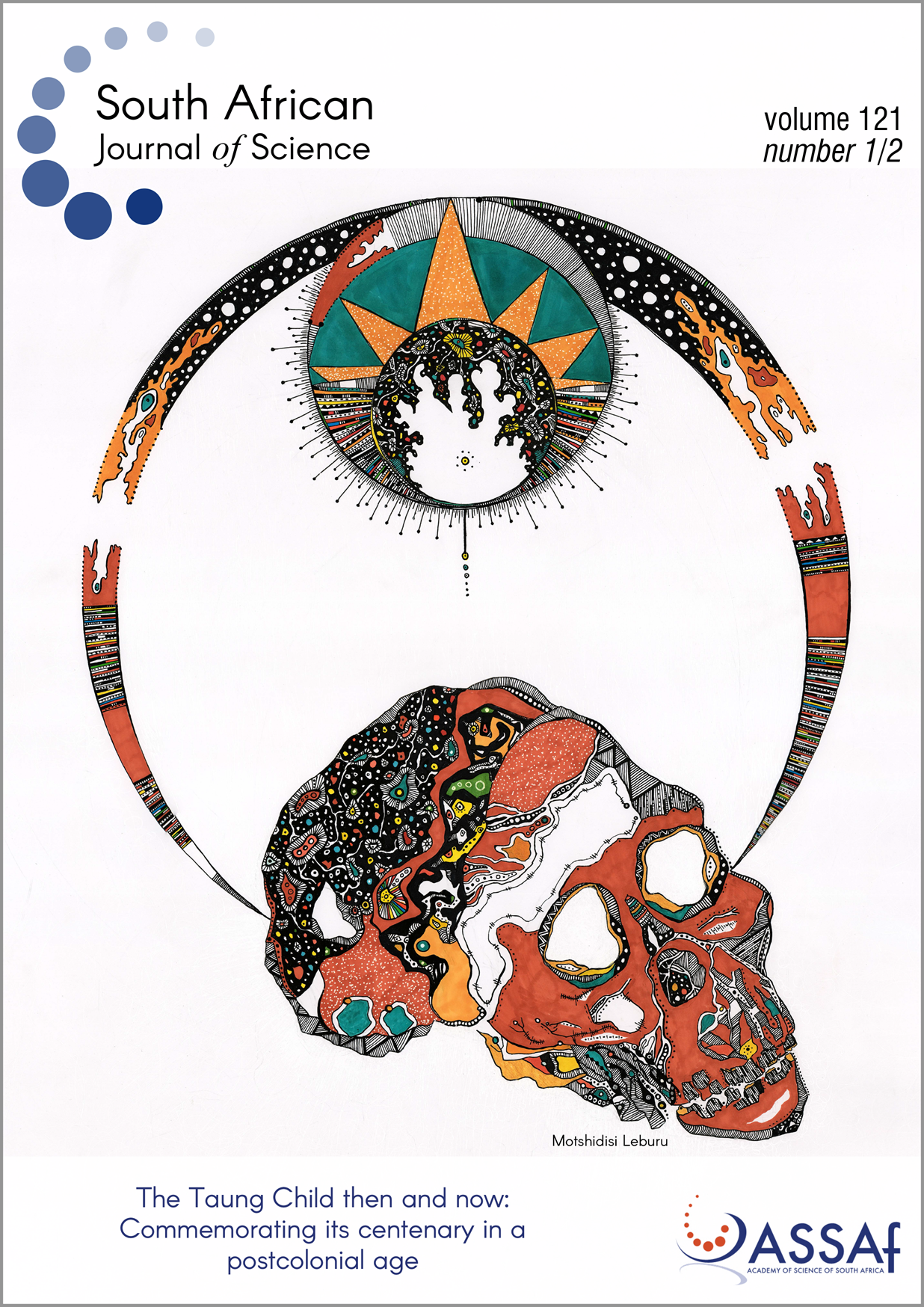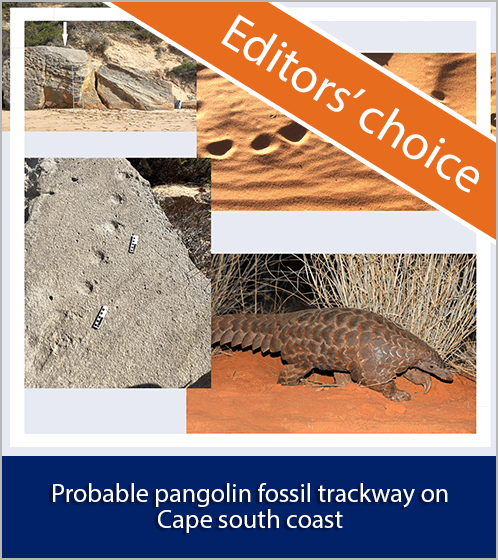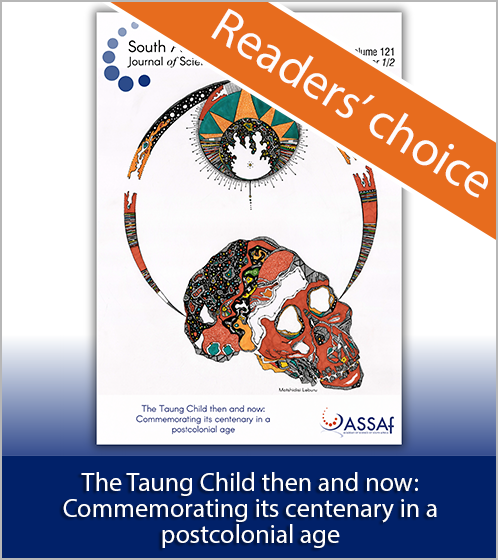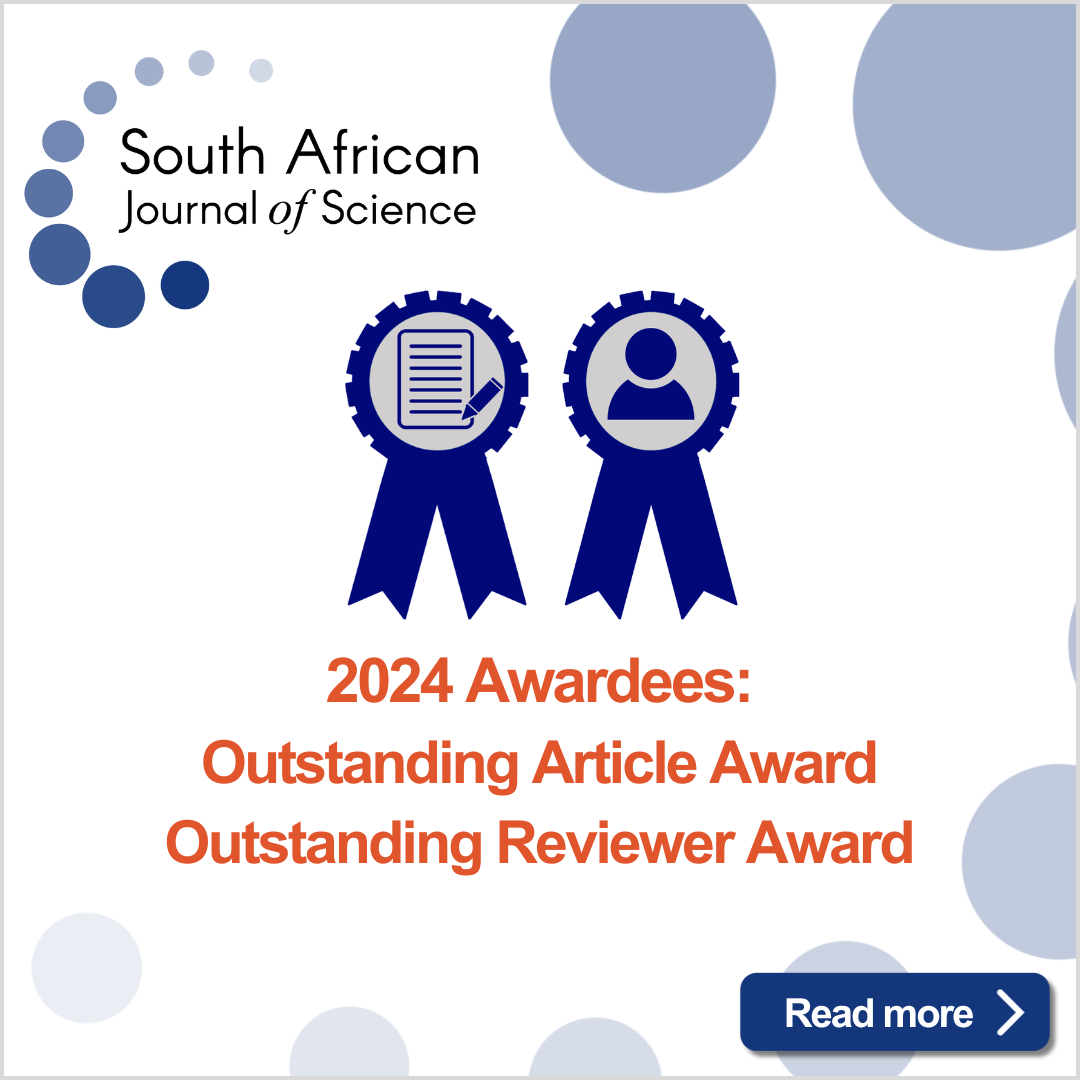Why heads matter in palaeoanthropology: The impacts and consequences of collecting skulls
DOI:
https://doi.org/10.17159/sajs.2025/18481Keywords:
Taung Child, crania, physical anthropology, postcrania, scientific racismAbstract
This piece reflects on the importance of and focus on heads – especially the collecting of skulls and its impacts – in alpha taxonomy, biological anthropology, and Western science more broadly. We consider how the announcement and overall discovery story of the Taung Child revolutionised our understanding of hominin cranial evolution, but also fit within these skull-collecting objectives and contributed to the palaeoanthropological fixation on the skull. We contextualise this within the history of ‘physical’ anthropology in light of its initial goals in scientific racism, and consider how this process of skull collecting has become normalised in the discipline as a result of this history. As evidence for this, we quantify the possible effects of skull-collecting by collating available data on the number of skulls versus post-crania curated in a representative South African collection and compare the number of skulls versus post-cranial hominin fossils that form part of species hypodigms. We also explore how the ownership of skulls and ownership of narrative in the discipline have been intertwined throughout its history. Finally, we focus on how this early overemphasis on skulls, and especially brain size/intelligence, may have skewed our understanding of human evolution and contributed to ideas of human exceptionalism.
Significance:
- The discipline of palaeoanthropology has a history of skull-focused research rooted in skull collecting and racist research.
- Historial skeletal collections and holotypes of fossil hominins are skull-biased.
- The Taung Child fossil postcranial remains were not included in the original study, which reflects this skull-centrism.
- Palaeoanthropologists need to recognise biases in research choices and the context from which our field developed.
Published
Issue
Section
License

All articles are published under a Creative Commons Attribution 4.0 International Licence
Copyright is retained by the authors. Readers are welcome to reproduce, share and adapt the content without permission provided the source is attributed.
Disclaimer: The publisher and editors accept no responsibility for statements made by the authors
How to Cite
- Abstract 379
- PDF 435
- EPUB 165
- XML 138
- Supplementary material 151
- Peer review history 147
- Abstract in Setswana 146
Funding data
-
Natural Sciences and Engineering Research Council of Canada
Grant numbers RGPIN-2020-04159 -
National Research Foundation
Grant numbers 136512













.png)